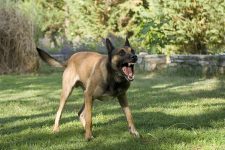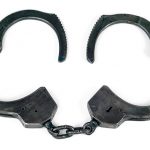Dog Attacks: The Liability of Owners

An eight-year-old girl has lost her hand after being bitten by a dog on the weekend.
According to news reports, the girl was playing with other children at around 3pm on Saturday afternoon under the supervision of an adult, when she stuck her hand through a gap in a fence to pat the dog.
The dog was fully contained in the backyard, and it is believed that the gap was caused by a wooden sleeper falling out of place.
The dog was one of three Alaskan Malumutes living at the Lake Macquarie property. The girl was taken to hospital after the dog bit her right hand just above the wrist, but despite their best efforts doctors were unable to save her hand.
The dog’s owners were not home at the time of the incident. The dog is currently being cared for by an animal welfare group, while the other two dogs are being looked after by relatives of the owner. Lake Macquarie City Council, together with local police, have commenced an investigation into the incident.
A man who knows the dog’s owners has described the attack as a ‘terrible accident’. He adds that his own child had played with the dogs in the past.
The incident comes just months after another Alaskan Malumute attacked a newborn baby girl as she slept at her Campbelltown home, causing serious facial injuries.
But despite their bad rap in the media of late, Alaskan Malumutes were responsible for just 0.9% of all attacks involving purebred dogs in 2011-2012.
Criminal Liability for Dog Attacks
We have written a number of blogs about potential criminal liability where a dog attacks a person or animal, other than vermin.
For instance, owners can face a maximum penalty of 5 years imprisonment under section 35A of the Crimes Act if they intentionally or recklessly do any act which causes a dog to inflict actual bodily harm (i.e. minor injuries such as bruising or scratching).
Heavier penalties of up to 10 years imprisonment apply if they cause the dog to inflict grievous bodily harm (i.e. ‘really serious harm’ such as deep wounding or a broken bone).
And owners of dogs which have been declared dangerous or menacing, or which are restricted breeds, can be convicted and fined up to $16,500 if they do not comply with ‘control requirements’ under section 51 of the Companion Animals Act – e.g. if they fail to have the dog desexed, leave it in the charge of a person under the age of 18, or do not keep it in a prescribed enclosure.
What About Civil Liability?
In addition to possible criminal charges, dog owners may also be responsible to pay for the injuries and damage caused by a dog attack.
Attacks on humans
Section 25 of the Companion Animals Act 1998 says that a dog owner can be liable for damages for:
- Bodily injury to a person caused by the dog wounding or attacking that person, and;
- Damage to the personal property of a person, including their clothing, caused by a dog in the course of attacking a person.
It is important to note, however, that section 25 does not apply if the attack occurred on property which is occupied by the dog’s owner, or where the dog is ordinarily kept, provided that the injured person was not lawfully on the property at the time of the attack, and the dog was not classified as a dangerous, menacing or restricted dog.
A dog owner will also not be liable for injuries caused by an attack that was an ‘immediate response to, and [was] wholly induced by, intentional provocation of the dog by a person other than the owner of the dog or the owner’s employees or agents.’
Attacks on animals
Section 27 of the Act says that a dog owner can be responsible for injury caused to an animal, other than vermin, by their dog attacking or chasing it.
However, the owner will not be liable if:
- The dog attacked or chased the other animal on property which is occupied by its owner, or on which the dog is ordinarily kept, so long as the dog was not classified as a dangerous or menacing dog at the time of the incident;
- The dog attacked or chased the other animal in the course of droving, tending, working or protecting stock, or;
- The attack or chasing was an immediate response to, and was wholly induced by, intentional provocation of the dog by a person other than the owner of the dog or the owner’s employees or agents, or;
- The attack or injury caused was an immediate response to, and was wholly induced by, an attack on the dog by the other animal.
What Could Happen To My Dog?
If your dog has been involved in an attack, you may wonder what the council or police could do to it.
Section 33 of the Act states that a dog which has, without provocation, attacked another person or animal, or repeatedly threatened to attack or repeatedly chased a person or animal, may be declared ‘dangerous.’
Alternatively, a dog may be declared ‘menacing’ under section 33A if it has ‘displayed unreasonable aggression towards a person or animal…or has, without provocation, attacked a person or animal…but without causing serious injury or death.’
Normally, your local council will decide whether to declare your dog menacing, dangerous or neither. It must send you a ‘Notice of Intention’ before it makes such a declaration, and you will have seven days within which to write a ‘letter of objection’ against the proposed declaration.
The council will then either go ahead with the declaration, or take no action. If council declares your dog to be ‘dangerous’, you will have 28 days within which to lodge an appeal to the Local Court.
A dog owner who has received a ‘Notice of Intention’ must comply with certain obligations from the date they receive the declaration. These include:
- Keeping the dog under the effective control of some competent person by means of an adequate chain, cord or leash that is attached to the dog and held by or secured to the person at all times when the dog is away from the property where it is ordinarily kept;
- Ensuring the dog has a muzzle fixed securely to its mouth in a manner that will prevent it from biting any person or animal at all times when the dog is away from the property where it is ordinarily kept;
- Registering the dog within 7 days of receiving the notice, if it has not already been registered.
It is important to ensure that you comply with these conditions, as failing to do so may attract a fine of $5,500.
If the council decides to declare your dog dangerous, additional obligations will apply.
Our website contains detailed information about ‘dangerous’ and ‘menacing’ dog declarations – including things to include in a letter of objection, such as dog character references and undertakings, and the process generally.
There is also a whole host of information about when the council may seize or apply to ‘destroy’ your dog, and how you can stop this from happening.






